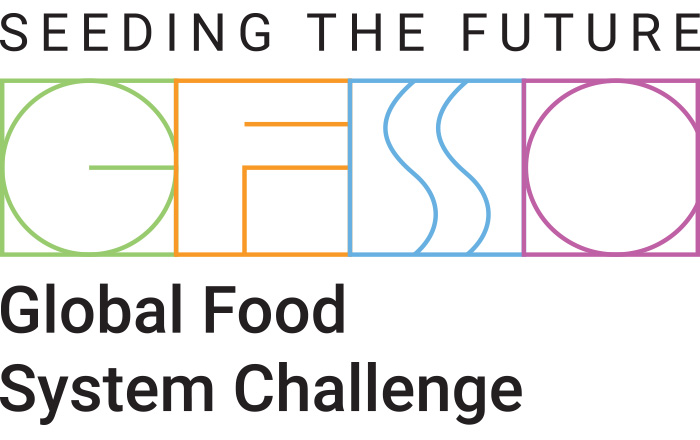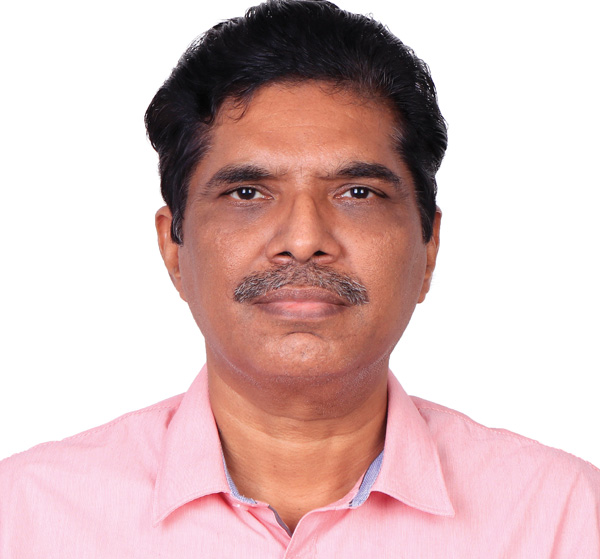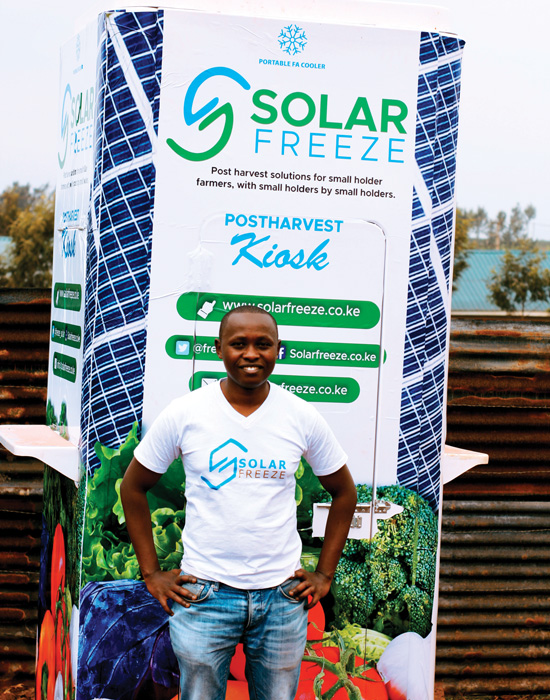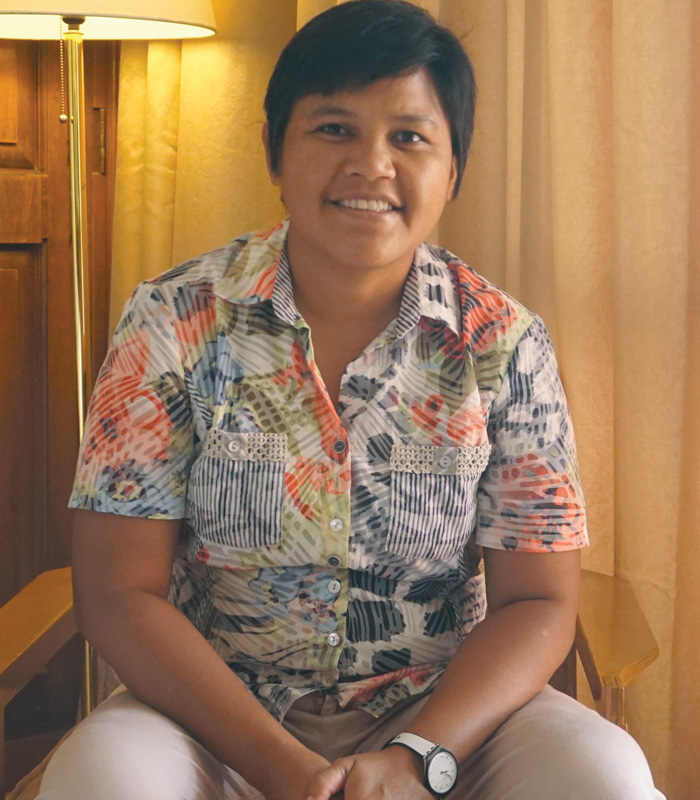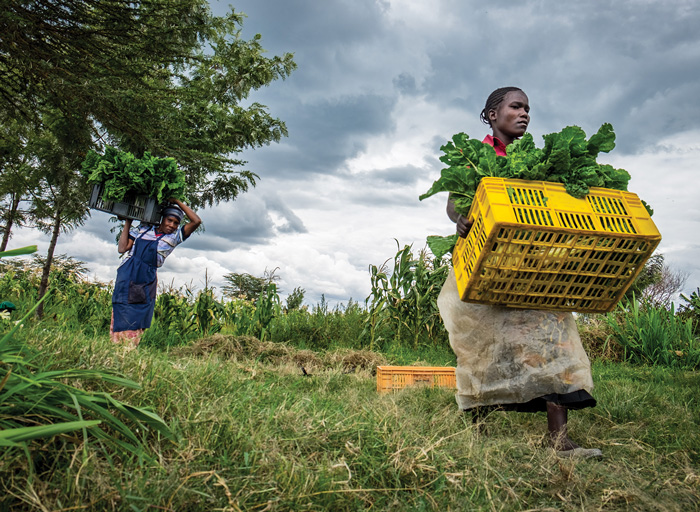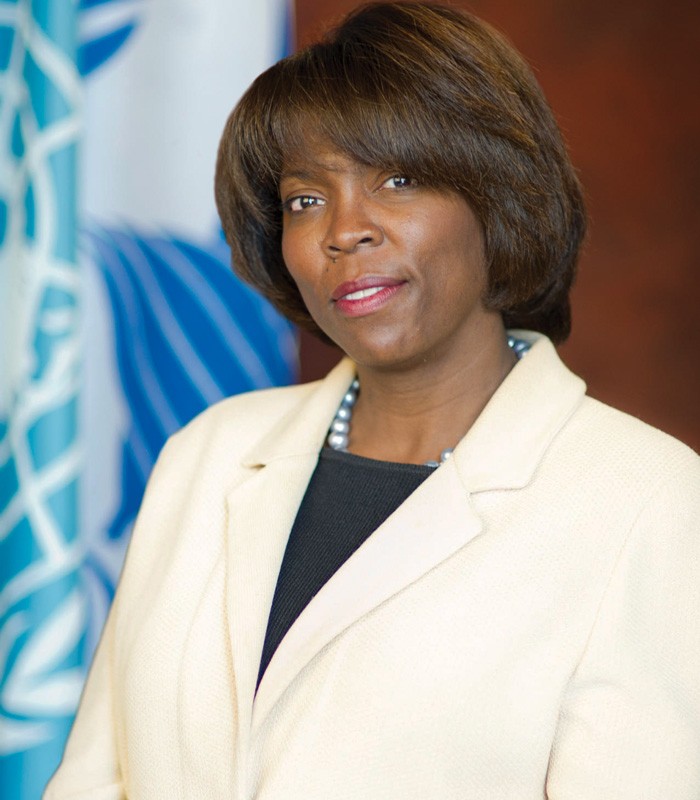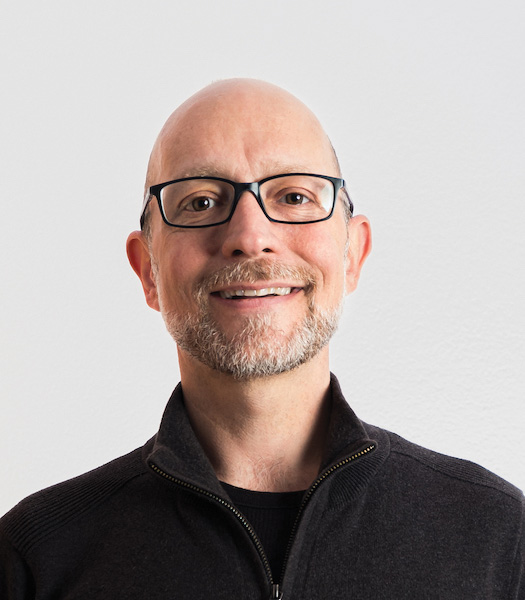
Seeding Innovation
Meet six winners of the inaugural Seeding the Future Global Food System Challenge, a new initiative that invests in organizations that deliver creative, sustainable solutions with the potential to transform the global food system.
Article Content
Impactful and game-changing innovations were the focus of Bernhard van Lengerich and his team’s work for decades when he was chief scientific officer and vice president for technology strategy at General Mills.
Since he retired six years ago, the veteran scientist has taken a broader view on some of the challenges our food system is facing and opportunities to address them. Van Lengerich decided to focus on the smaller enterprise level to help reward and encourage innovators who were effectively overcoming obstacles and tackling those challenges.
The result is the annual Seeding The Future Global Food System Challenge, which IFT launched last year. The Challenge offers awards totaling more than $1 million, funded by Seeding The Future, a van Lengerich family foundation. The three levels of awards are Grand Prizes, Growth Grants, and Seed Grants.
“Most groundbreaking ideas start at a very small scale—like seeds—and need nurturing and support to grow and be scaled,” van Lengerich says. “In my experience, if you have multidisciplinary teams of dedicated scientists, engineers, innovators, and a champion, those ideas can become significant game changers and be highly successful in the marketplace.”
The Challenge focuses on scalable and high-impact innovations that reside at the intersection of three domains: safe and nutritious food for a healthy diet; food that is produced sustainably and without waste; and food that is accessible, appealing, affordable, and trusted by consumers.
“There are, of course, innovation opportunities in addressing just one of those domains,” van Lengerich says. “Many companies focus on developing food offerings to be more nutritious, but also delivering great taste isn’t easy. Others may focus on great taste, but delivering on nutrition or sustainability at the same time can be difficult. We believe that there’s an innovation opportunity we call ‘innovation white space,’ which seeks innovations that address not one but all three of those domains.”
And while sustainability, high nutritional quality, and consumer aspects are at the core of the challenge, it was important to van Lengerich to recognize and help enterprises whose ideas can have a significant impact on the food system and people. “Our moonshot goal is to help positively impact the lives of one billion people over time,” van Lengerich says.
For example, the arsenic-mitigation properties of rice developed by the International Rice Research Institute “will potentially impact between 40 million and 70 million people once it’s deployed,” he says. Solar Freeze is fielding inquiries now from across Africa for refrigeration systems that it debuted in Kenya. And WorldFish will use its prize to help get Myanmar government approval to extend the reach of products the organization already has developed.
Van Lengerich had initially considered creating a one-time, larger prize but instead decided on annual prizes and rewards ranging between $25,000 and $250,000 that the Seeding The Future Global Food System Challenge is giving out. “We want to create a rich, robust, and diverse pipeline of high-impact innovations over time. We believe that this approach will have a higher probability for making a significant impact on the food system, the environment, and people,” he says. “In our first year, we received over 900 team applications from more than 60 countries and the high quality, diversity, and impact potential is staggering. Going forward, we are optimistic that we can continue to attract and reward teams of innovators with game-changing and impactful ideas.”
GRAND PRIZE WINNERS
Making Rice Safer
The Philippines-based International Rice Research Institute (IRRI) won a Grand Prize for its arsenic-safe rice project, which is deploying newly developed arsenic-excluding rice varieties that are much safer for human consumption, to create health and socioeconomic benefits in arsenic-polluted regions such as the drainage basin of the Himalayas.
The team standardized arsenic levels and screened rice genotypes for the safest ones, identified some strains that mitigated arsenic migration through the plant, and released those breeds to scientists in the region.
“We know the exact locations of the genes, and that puts us in the strong position that no one has to breed anything—it’s already bred,” says Jauhar Ali, research unit leader of hybrid rice technology for IRRI, which is part of the Consortium of International Agricultural Research Centers (CGIAR).
“Now we just need to get the material further into the market and share it freely,” continues Ali. “There is no intellectual property protection. It should be freely available to people, and people should be able to benefit from it.”
The underlying problem is that waters from the huge footprint of the particularly arsenic-rich Himalayas flow everywhere in East Asia, and growing rice—the overwhelming staple of regional diets—requires lots of irrigation water that can’t be filtered for the heavy metal. The rice plant laps this water up through the grain and the straw, so that even livestock feeding on rice plant waste get huge doses of arsenic.
The major effects of the poisoning include human cancers of the digestive system, neurotoxicity, cardiovascular diseases, and early births. Yet governments in the Himalayas’ shadows tend to set high and false limits for “safe” levels, Ali says. “They do this because this is a bombshell issue, and they don’t want to be answerable to their people.”
Ali’s team at IRRI stepped in with the conclusion that “rice should be safer to eat, so let’s attack this in a systematic way,” he recalls. His team determined lower, but feasible, levels of “safe” exposure and screened genotypes whose root systems “would not allow arsenic to get to the shoots at higher than these levels.” Already, almost 30% of the Himalayan watershed has a low-arsenic rice variety available.
Harnessing the Sun’s Power
One of the best ways to reduce postharvest waste in developing nations is to cool fruits, vegetables, and milk en route to processing, and the rapid spread of solar energy technology may be helping the world turn a corner on that problem. Grand Prize winner Solar Freeze provides portable, solar-powered cold storage units for rural smallholder farmers.
“Our approach is a shared-service model, like an Airbnb for preservation and cooling of produce,” explains Dysmus Kisilu, founder of the Kenya-based enterprise. “Smallholder farmers get to use it on a need-for basis, [it is] not something they purchase. That automatically relieves them of making a huge capital investment in cold storage.”
Van Lengerich says a big part of the appeal of Solar Freeze for a Seeding the Future prize was that “it wasn’t in its infancy anymore. It is a great idea and needed support to be scaled. We found ourselves asking why no one had come up with this 10 years ago.”
It was just six years ago that Kisilu was at the University of California, Davis, and wondering the same thing. So he founded Solar Freeze and got to work on the business model and the technology. The company insulates the inside of a regular shipping container with fiberglass and Styrofoam. Solar panels on the top “provide all of the energy required,” he says. “We sit on the equator, which guarantees us good sunshine.”
A crucial part of the Solar Freeze model is that it provides marketplace data to client farmers. “In a lot of places, produce in season is just wasted, because it makes no financial sense for farmers to send it,” Kisilu says. Dairy farmers in Kenya similarly find that they have to waste their milk for lack of bank loans to buy cooling equipment.
But Solar Freeze allows farmers to rent its spaces and then provides them with information about market conditions via direct messaging. “They get to be in the loop about how much money they can make from their produce at all times,” he says. Clients typically have reduced their wastage inside the farm gate by 90%, allowing them to double their income and more from their crop.
A new, chest-refrigerator-size unit is making the Solar Freeze technology mobile. The company has worked with more than 3,000 farmers so far.
A Big Idea for Small Fish
WorldFish, another Grand Prize winner that is also part of CGIAR, develops homestead aquaculture projects that can be operated by individual tract owners, built around small ponds of tiny, nutrient-rich fish. They’re consumed whole by adults and made into powder for nutrition products for infants and for expectant and lactating mothers.
The great team at WorldFish is scaling down aquaculture so that it’s not on an industrial, but on a small scale, but highly multipliable,” van Lengerich says. “Highly nutritious small fish and also fish powder are the focus of WorldFish to provide much needed nutrition for women and children.”
For the project, WorldFish concentrates on utilizing some of the many small, indigenous freshwater fish species in the ponds, lakes, and rivers of Africa and Asia. Only two or three inches long, these varieties include the Burmese border loach; small marine species include anchovies and sardines. “So you can harvest them easily, and you don’t have to stock them,” says Quennie Rizaldo, a nutritionist for WorldFish.
Residents of countries such as Myanmar customarily fry the small fish whole for adult consumption; the tiny bones provide “a bit of crunch,” Rizaldo says. “It’s a cultural norm to eat them like that.” But kids tend to shy away from the bones. “So we said let’s dry the fish and grind them into a powder and incorporate them into foods.”
The resulting powder is chock full of calcium, iron, vitamin A, and other nutrients, especially because it includes bones. “People prefer to eat large fish because it’s easier, and you can always eat it as a fillet,” Rizaldo says. “But when you do, you lose some of the calcium.”
WorldFish has made Myanmar its first major market for commercializing the powder, working with an indigenous company, FedWell Foods, to develop products including porridges for adults and infants, noodles, and cookies. In porridge, the fish powder is a protein-packed replacement for beans, chickpeas, and other plants. “That increases the bioavailability of nutrients, so the body can utilize them better,” Rizaldo says.
Integrating cultivation of the small fish into household aquaculture operations is another aim. In Zambia, for instance, WorldFish is showing farmers how the tiny species can be successfully grown in the large-fish ponds without interfering with production of the larger species. “The fish are eating different types of food,” Rizaldo says. “So they can grow large fish for income and small species for consumption.”
GROWTH GRANT WINNERS
A Solar Drying Solution
Working with the Kenya Industrial Research and Development Institute and the United Nations Environment Programme’s Nairobi office, the African Centre for Technology Studies (ACTS) earned a Growth Grant for its work harnessing solar energy to dry crops in Sub-Saharan Africa. Like Solar Freeze, ACTS also has deployed a service model. But the enterprise is a not-for-profit with the aim of quickly spreading its solution across the region via a social enterprise structure.
“We view people as a solution and also as beneficiaries of these projects,” says Joshua Ombaka Owade, research fellow and head of the program for ACTS. “Eventually, we take care of the income challenges and also nutrition, addressing postharvest losses and also the farming enterprise.
“This project was born out of a challenge of postharvest losses that can be around 10% for cereals in Kenya,” Owade says. “If you’re losing 10% of your production, it’s not low. But if you look at fruits and vegetables and tubers, losses can be as high as 50%, and that’s a serious problem. And there’s something we can do.” Indeed, van Lengerich says, the project team came up with “an elegant way to reduce postharvest losses and also increase small-farmer income and improve their livelihood, so everyone is winning; it’s a very exciting solution.”
The ACTS solar dryers are units that range from about 10 square meters to 100 square meters, with smaller spaces required for cereals and larger spaces for produce. The transparent units are made using locally available materials, with solar-heated air moving through the units. The partners also have been developing a dryer fueled by biomass for use in the Kenyan highlands where sunshine isn’t as prevalent.
“To enhance access, we use a pay-as-you go model for farmers,” Owade says. “We’ve already established 10 solar drying centers, and we’re looking to establish 15 more. We’ll establish a revolving fund that will allow us to grow as people pay into it.”
Cultivating Soldier Flies for Animal Feed
Another Growth Grant went to Food Systems for the Future (FSF) and Afya Feed, which joined to attack the challenge of producing affordable poultry and aquaculture feed in Rwanda by designing a commercial production facility for black soldier fly larvae, a high-protein feed source that chickens and fish love to gobble. This can help reduce cost pressures and demand for soy, which feeds humans. FSF and Afya Feed partnered with Protix, a Dutch-based producer of the larvae.
“Imagine if we weren’t using food that humans could consume for feed but also could provide the feed necessary for the growth of poultry and fish as well,” says Ertharin Cousin, a former executive director of the United Nations World Food Programme and now chief executive officer of FSF. “That soy could be converted back into the opportunity for human consumption.”
Large-scale operations such as Protix have produced black soldier fly larvae as a substitute for soy-based animal feed in Europe and the United States for some time. Smaller-scale efforts in South America, Kenya, and Ethiopia also have started up. Meanwhile, FSF was working to close financing gaps between promising companies that are addressing global food insecurity and the kind of capital and operational support that would scale them up.
The three parties are partnering to catapult a business model proven to benefit farmers financially, and to help Sub-Saharan countries economically. Protix, for instance, “is providing us with technology-transfer capacity to support our ability to leapfrog the learnings that they’ve made over 10 years in the space,” Cousin says. The grant from the Seeding The Future Challenge, she adds, “will allow us to move beyond the design phase to begin work for feed formulation and to begin to develop the first phases of marketing of the product by Afya.”
Accessing biowaste from the capital city of Kigali to serve as a continual feedstock for black soldier fly larvae is another key for the project. “The ministry of technology of Rwanda is trying to reduce the amount of food in landfills, and we’re working to become the off-taker of that food waste and waste from food manufacturing facilities,” Cousin says. She believes the venture will be able to produce at least 10,000 metric tons of black soldier fly larvae by the end of 2023.
Fertilizing With Fungus
Growth Grant winner iDE is a nonprofit group working to establish community-managed vermicompost fertilizer enterprises that incorporate Trichoderma, a beneficial fungus that improves plant growth and yields and also acts as a biopesticide.
Vermicomposting is a form of composting that uses earthworms to promote decomposition. The approach speeds up the composting process and protects crops to transform organic farm and household waste into nutritious food for rural communities.
Operating for many years in Nepal and about a dozen other countries, the broad focus of the midsize group is to “work with entrepreneurs to develop and support local businesses and to eradicate rural poverty around the world,” says Corey O’Hara, iDE’s country director for Nepal.
IDE’s decades-long work is cresting at an important time, when “chemical fertilizer is getting more expensive and not necessarily applied in the right amounts at the right times,” van Lengerich notes.
O’Hara says that in countries including Nepal, “fertilizer is very scarce and is designated by the governments for cereal crops like corn and rice.” At the same time, he says, developing nations still serve as dumping grounds for “the worst pesticides, which are dirt cheap and can’t even be sold” in Western countries.
“You still see farmers in fields with pesticide in a glass jar, with no labels and no instructions how to use them, applying it with their bare hands,” O’Hara says. “Or they spray DDT on plants and every bug you see will be dead. It’s really scary to see.”
The use of composting with Trichoderma emerged from such abuse of chemical pesticides and fertilizers. Trichoderma is “found everywhere at low levels,” O’Hara says, “but it will outcompete other fungi, such as the molds and mildews you see affecting crops in a humid area like Nepal.
“It also helps plants absorb nutrients better and is a biopesticide,” O’Hara continues. “In field testing, we saw that if you treat seeds ahead of time and mix in compost, you get 15% better yields. That is huge.
“In the last couple of decades we’ve worked with about 240,000 small-farm households in Nepal, and a recent survey showed something like 80% of farmers were using Trichoderma compost,” O’Hara adds.
IDE works with farmers and rural villages on setting up compost stations that utilize barnyard manure, leaf litter, and other plant residue from farms. An additional benefit of Trichoderma is that it increases the speed of composting so that these community stations can complete four cycles a year instead of the traditional three.


